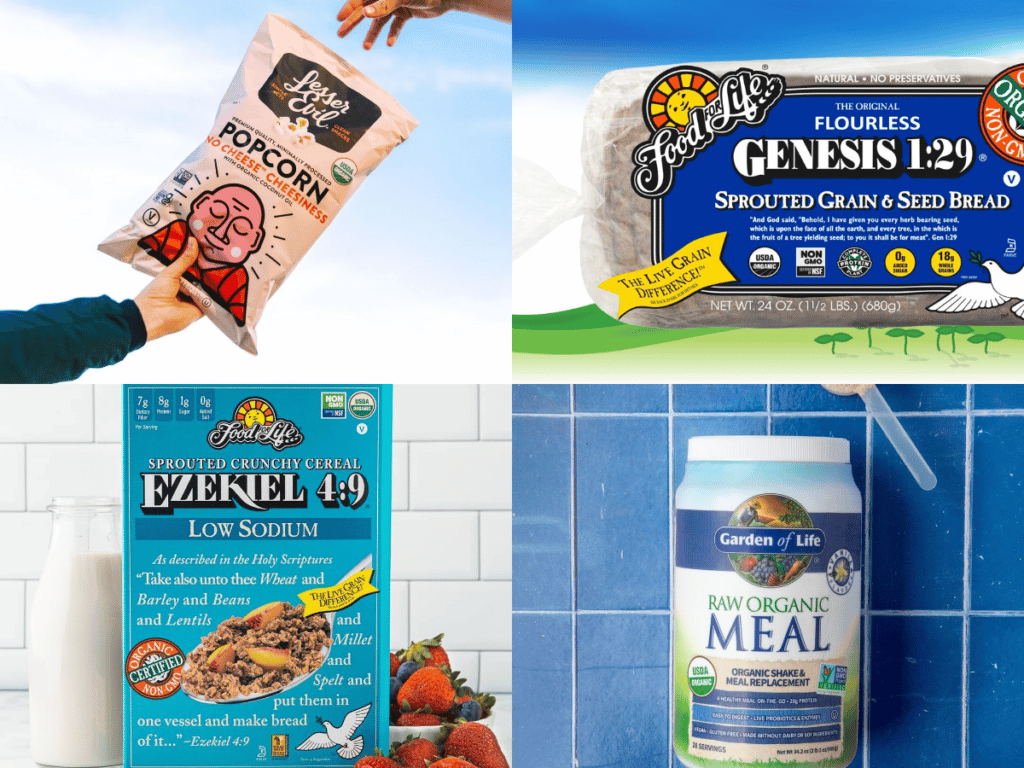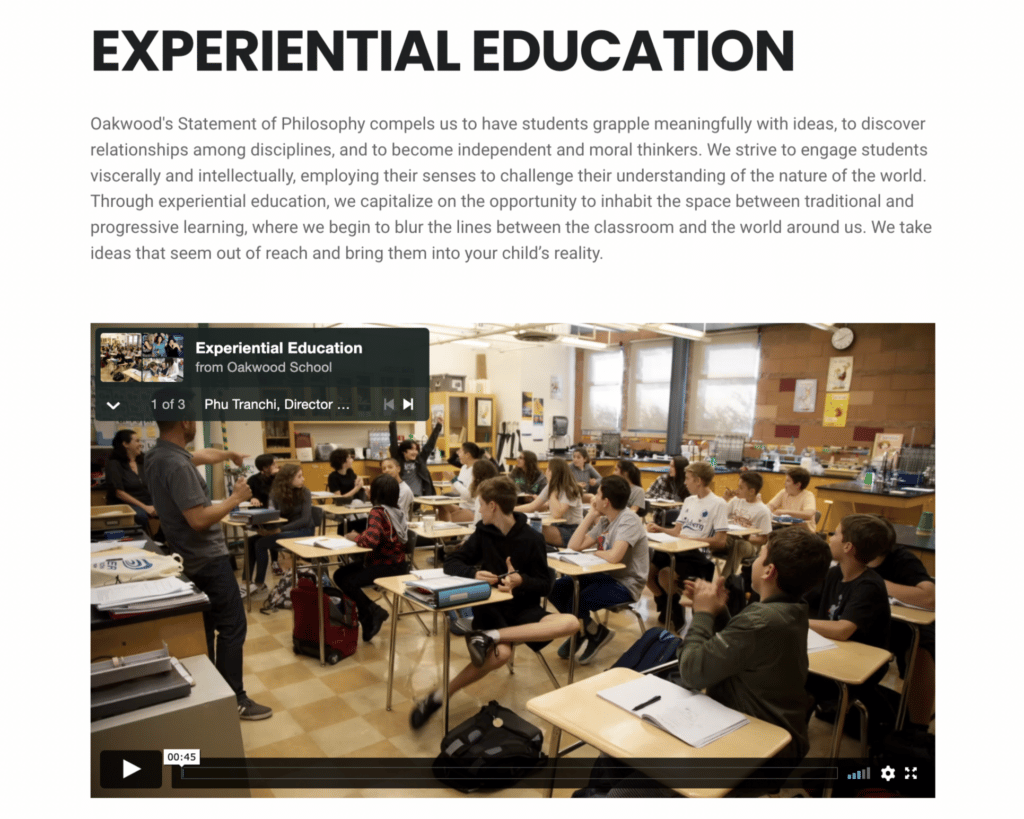The one thing humans can’t handle is chaos. It’s why the Soviet Union fell only to install Putin, and the brief moment of hope that was the Arab Spring led to a familiar regime of autocrats.
It’s also why when there is a decrease in government stability, there is an increase in religiosity in both Eastern and Western cultures. In a 1978 Gallup poll it was found that 80% of people who leave their religion ultimately come back to it, and although researchers are only just beginning to study this phenomenon, I can tell you from my own work with both religious and atheistic brands, people who leave organized religion quickly become eager to replace the void with another system of meaning—a dimension most atheist groups have failed to consider.
In all of these instances, people swung from an extremely tight culture to an extremely loose one, and then curiously, back to a tight culture once again.
No matter the magnitude, sudden freedom brings a normlessness (and in some cases, disorder) so uncomfortable that we would rather subscribe to clear rules than to wade into the unknown without any at all.
It’s a facet of human nature that cultural psychologist Michele Gelfand has studied extensively. Every culture falls on the spectrum from tight to loose: from highly structured and normative to loosely held and evolving. When a culture veers too far in one direction, there is often a reaction in the opposite direction.
When it comes to branding in today’s world, however, we’re seeing an emerging trend where tightness is especially effective in loose places.
It’s easy to see the value of tightness in hindsight. Tight brands like Greenpeace, Trumpism or the modern Académie Française may appear like anomalies, but they are in fact deeply human—and highly predictable—reactions to loose cultures. The people in these groups felt destabilized by evaporating social codes, and in that mental state, welcomed in the strong voice of certainty. Where there is chaos, there is someone promising a new order.
But sometimes the most destabilizing chaos isn’t on the world stage. Nor is it a public outrage or even a shared experience.
It’s found instead in the quiet chaos of our everyday lives: making a home, raising a family, putting a meal on the table. These mundane corners of the human experience are also where we find the loosest pockets of culture today: places where there is a glut of information but few steadfast rules. Where despite incredible progress and empowerment, normlessness has taken over.
And it’s in these well-traveled but chaotic spaces that a new generation of brands has stepped in to tighten the vice.
The Religion of Food and Nutrition
In America, we don’t know what to eat, where to eat or how to eat, and the more one tries to figure it out, the more confused they can become.
A favorite anecdote of mine is a note hidden in the comments section of a 2017 New York Times article about clean eating. A reader named Ellen, below, describes the chaos of having to cook Thanksgiving dinner for a family that has one person who is gluten free, another who is dairy free, one who is keto, and another who is low fat.

As journalist Julia Belluz has pointed out, we’ve entered the “United States of Divided Dinner Tables. We’ve shifted from a culture where everyone eats the same thing at supper to a hyper-individualized one, where guests almost certainly won’t be willing to break the same bread, or eat any bread at all.”
Generally speaking, the American diet looked much simpler up until the 1940s, when dinner tables across the country had more in common than not.
Social propaganda films streamed into homes, telling women not only what to cook at dinnertime, but daughters how to set a table, sons how to greet their fathers before the meal, what was appropriate to talk about, and so on. Programs like this continued to proliferate onto colored screens in the early 1950s.
But after WWI, and with an influx of GIs coming home with expanded palates, things began to change.
Soldiers had developed a taste for things like pizza, french wine and oregano (to give you an idea of how intense the appetite for new flavors was, sales of oregano in the U.S. rose by a remarkable 5,200% from 1948 to 1956). Meanwhile, post-war Americans had more wealth and began to travel, taking in the smells, tastes and methods of new cuisines.
Suddenly, America’s new foodie culture was born and for the first time we began to see food less as sustenance and more as experience. The rules of food were breaking and an outgrowth of exploration began. Food was now an “aesthetic choice”, a decision mired in context.
Today, grocery stores carry an average of 50,000 items, but in the 90’s, there were a mere 7,000 SKUs on store shelves. That means in the past 30 years alone, we have had to navigate a shopping experience with over 40,000 more options than before. Consider the fact that in 2014 there were already 12 flavors of Thomas’ English Muffins and 19 different varieties of Cheerios, each one promising a slightly different experience.
The problem here is not the paradox of choice. Choice can be a wonderful thing if people know how to navigate it.
The real problem is the lack of norms around what foods are good or right to eat.
Despite growing mountains of research, we still don’t know what the ideal diet is, we don’t know why adult onset food allergies have skyrocketed, and of all the lies that hurt any American generation, the food pyramid was probably one of the biggest. It is a plight on American health that will take decades upon decades to undo.
Even something as simple as bread can surface how normless American food culture is. French bread is baked with limited unprocessed ingredients, with most French people living within 5 minutes of a bakery, and 50 times more bread bakeries per capita than in America.
French norms around baking bread also inform their social norms around eating it. There are strong codes around how to buy it, how to eat it, and how it relates to the larger meal that is understood among all.
American bread, on the other hand, has been industrialized, contains many ingredients that are banned and considered carcinogenic in other countries, and is only found aging on grocery store shelves for the large majority of people.
It’s inspired a cottage industry of food activists like alittlelesstoxic and thefoodbabe who make it their job to decode food labels and expose dangerous American food regulations and policies. Yet the irony of many wellness influencers in the larger community is that in the process of dispelling food falsehoods, they often propagate other falsehoods around medicine, politics and conspiracy theories.
In France, food norms are powerful and cohesive forces, while in the US food is simply a whirlwind of chaos.
But the chaos begins even before our meals get to the table are served. In 2019, before Covid forced us to bake sourdough and throw together whipped coffees, people were already migrating away from eating at the dinner table.
In a survey of 1,000 adults, it was found that 30% of people were eating dinner on the couch, and 17% of people were eating it in their bedrooms—two places where there is likely a screen and likely no conversation or interpersonal gathering. Remember that rooms have rules, and when we change the room, we create a vacuum of norms.
Scholars have also noted how fewer and fewer people are eating together, and only about half of families who live together have dinner together. As food and screens got closer to one another, it makes sense that open plan kitchens began to blend meals and entertainment even more. #Mukbang, #feederism and #foodporn made eating and watching the same thing, and the room itself disappeared.
Despite progress and an abundance of information, there is an anxiety-inducing looseness all around us when it comes to food.
Food culture has become chaotic and normlessness has taken over.
But what is interesting is the way in which some brands have created cultural tightness by leveraging our deepest beliefs.
Between 2016 and 2018, three lawsuits were lodged against Whole Foods and Lacroix collectively. All of them were concerned with the use of the word “natural” in their food labeling. In all cases, the plaintiffs had felt duped—that the “natural” branded language and imagery were in fact lies once they interrogated the ingredients list, where they found confusing (at times questionable) chemicals.
Whole Foods settled two of those claims, while La Croix was able to dodge theirs when the plaintiff publicly retracted her statements. But controversy over the word “natural” is nothing new.
In 2009, there was a spate of lawsuits aimed at food makers using the same term, including Snapple, Ben & Jerry’s, Häagen-Dazs, and Nature Valley. In fact, the FTC had tried to come up with a definition for the word “natural” as early as 1974, and the FDA has been trying (and failing) since 1991.
These cases have been hard to navigate because the word “natural” is so much more than just a word. Author and religious scholar Alan Levinovitz has written extensively about food and language, and he reveals the larger complexity hiding under such a simple term.
According to him, the word “natural” has become a “sort of a secular stand-in for a generalized understanding of goodness, which in religion you’d call holiness, or purity, or something like that. “Nature,” with a capital N, [has taken] the place of God. In a secular society, we don’t look to religions to tell us what to eat or how to heal ourselves, so you need a secular substitute when it comes to generalized guidance for what you can eat, and that secularized substitute is nature.”
Levinovitz has observed that many of the public comments on the FDA case to define the word “natural” take a religious tone, hundreds going so far as to refer to Mother Nature or God directly, with arguments such as, “Natural is as Mother Nature intended. No manipulation or addition by man” and “If it has anything other than what God intended then it is NOT natural”.
It seems that defining what “natural” means, then, would be the same as understanding God’s own will.
Knowing what to eat has indeed become a godly quest. When we talk about food, we talk about “good” and “evil” foods, “clean” and “dirty” foods, “pure” and “impure” foods, and so on. (Even the Q Shaman refuses to eat non-organic food in jail, citing his religious beliefs.)
Whole Foods, La Croix and Snapple didn’t misuse the word “natural”. They leveraged it to tighten the vice in a very loose culture. They understood and surfaced what people were already starting to believe—that food is not about sustenance. It is about righteousness.
Today, highly popular brands like Lesser Evil snacks, Ezekiel 4:9 and Genesis 1:29 breads, and Garden of Life food supplements do the same thing, starting with their thinly veiled biblical brand names. True, their products may be great, but they have done the incredible task of creating a signal in the noise. They broadcast tight norms in the normless world of food, saying “Eat what is Godly.” And there are few cultures tighter than that of godliness.

If food is a religion, then diet culture is a cult (I write that figuratively but in some cases, it’s literal truth). As Ellen from Tucson can attest, Keto, Paleo and veganism have very little room for breaking the rules, even during Thanksgiving.
Both Paleo and Keto are actually reboots of the 1960s fads of Atkins and the back-to-the-land movement respectively.
They also both purport to be the natural way for humankind to eat (a paleo diet limits foods that became common when farming emerged about 10,000 years ago), and trace their validity back to our ancestors. Countless blogs and Reddit posts claim that a ketogenic diet was how our forebears ate for the majority of the year. An equally countless number support Paleo with the same argument.
Both aim to take us back to some natural, purer state we’re meant to be in, and the brands in this space, like Primal Kitchen, Hu Kitchen (short for Human) and Epic Provisions play with this notion. The brand belief here is that the truth about food exists in the limited scope of the past, when we were restrained creatures, closer to Mother Nature.
To be Keto or Paleo, to eat bread from the bible, to have a pure palate—eating is no longer about the chaotic world of nutrition but about the narrow confines of moral superiority.
The looseness or tightness of a culture in a category is tied to its norms, or lack thereof. Simply having an abundance of choices doesn’t mean the category is loose. What matters is whether among those choices there are clear, culturally agreed-upon rules and guideposts that help people consistently move forward with confidence.
We’re imbuing food with incredible meaning because we don’t know which way us up. We crave these rules, subscribe to them, fall in and out of belief, but always come back to them as a source of comfort.
It’s consistent with the reality that people buy with emotion, not logic.
Tight brands like the ones we’ve surveyed here raise the emotional stakes for their users. They create emotionally provocative norms so that we don’t just know the rules, but feel them deep in our bones.
The Branded Plight of Family and Parenting
The American family in the American home can be such a clear image from afar, and yet a mirage of confusion up close.
It’s been well documented that the nuclear family was a lie, and statistically speaking, only existed in the majority of homes for about 15 years, from 1950 to 1965. But like most social constructs, the lie held a normative value that was especially important in America, a country that arguably has very few proven norms around the meaning of the home, the structure of the family, or the rules of parenting.
There are no strong social codes that tell us how to parent in the US as we might find in other countries. In Norway, it’s understood that kids go to school at one year old and should be learning in fresh, outdoor air. In Japan, toddlers run errands around town unattended, and was an adorable sight that had us on the edge of our seats in Netflix’s Old Enough! In Spanish and Iranian cultures, it’s not uncommon for little ones to stay awake until 9 or 10pm because it is in the evening that the family socializes and forms bonds.

Norway and Japan’s parenting norms make sense because both cultures have agreed that childhood should be spent developing a sense of independence. Spain and Iran’s cultures hold firm conviction that childhood is instead about interpersonal relationships. And parenting norms in all of these cultures are accordingly defined.
It’s hard to think of a single, widely accepted American norm that can be added to this list. Despite being popular and running in Japan for over 30 years, the mixed American backlash to Old Enough! revealed just how confused we are in this country, and yet how dogmatic we can be about that confusion.
This all illustrates Amy S. Choi’s point that, “The crisis of American parenting, as anyone who has looked at the parenting section of a bookstore can attest, is that nobody knows what the hell they’re doing.” Indeed, parenting advice is a booming industry built on mountains of information cut by valleys of uncertainty.
Intimate portraits of the home reveal even more family dynamism.
IKEA’s annual Life At Home Report shows a steady decline of comfort, trust and meaning in the idea of home. In 2016, people longed for more privacy in their own homes. In 2018 a whopping 1 in 3 people said there were places where they felt more at home than the space they lived in. In 2019 only 48% of people felt a sense of belonging in their own home. In 2020, while in the throes of Covid, 42% of people felt uncomfortable negotiating space for themselves in the home (which is probably why in that same year 38% of people found the bathroom the best place for a quiet moment of reflection.)
That’s provided that home even is home anymore.
People are using Airbnbs as part-time housing, others are trading in homes for the #vanlife or #expatlife, and at least one couple is living from cruise ship to cruise ship because it’s more affordable than the American dream.
And all of this is underscored by a family structure that is evolving. As of 2014, America ceased to have a dominant family structure (what many of us used to imagine as two parents with 2.5 kids). Diversity and fluidity have shot up, driven by cohabitation, divorce, remarriage and non-marital recoupling. In one study over a three-year period, about a third of kids who were younger than six years old had already experienced a major structural shift brought on by divorce, separation, marriage, cohabitation or death.
Chaos abounds in this wide and relatively new space. That chaos has also ushered in tight, norm-building brands that offer rules for getting our bearings straight.
There are currently over 5,000 Montessori schools in the US, and they are growing. 700 of those Montessori schools are public, and of those public ones, the vast majority were opened in the last 20 years even though Montessori came to the US over 100 years ago. Montessori is an alternative school format that talks about all the things parents want—social skills, independence, community—but quickly moves into ideology.
My own children go to a Montessori school and I can see a prescriptive ideology in nearly everything they do, especially when it comes to how things are described and labeled.
Play is called “work” because founder Maria Montessori believed that a child’s play should be elevated and respected, and was in fact work that required concentration and large blocks of free time to explore independently. When kids are done with an activity they are asked to make it “beautiful” again, meaning to clean up and put things back in order.
Classrooms only contain objects and toys made of natural materials in calming hues—no plastics, logos or characters. Kids partake in practical life exercises that “resemble the simple work of life in the home: sweeping, dusting, washing dishes, etc. These purposeful activities help the child adapt to his new community, learn self-control and begin to see himself as a contributing party of the social unit.”
Montessori schools across the US post their doctrines on their websites, and it’s easy to see that this is not just a mode of education. Instead, this is a clearly defined philosophy of child raising.
Even your neighborhood preschool is likely to have a manifesto posted somewhere, and it’s likely to read like a charter for a new parenting movement. Oakwood School in Los Angeles offers an incredible curriculum for their students, but more importantly, their philosophy goes far beyond education, calling out moral obligations, social change and the need for kids to understand “the nature of the world”.


It’s no wonder that Montessori is flourishing, along with other highly ideological school formats like Waldorf, Reggio Emilia, forest schooling, worldschooling, and many, many others.
These schools focus the chaos of parenting into something manageable, tightening the vice of parenting and family with heavy norms. They know their job is not to merely educate, but to promise order in the storming mind of the mother and father. There are heavy rules to tell you when you are on the right track, and when you are not.
But parents feel the storm long before their children go to school.
Once the Meta or TikTok algorithm figures out you’re expecting a baby, you’ll be deluged with parenting experts offering bite-sized pieces of advice up and down your feed. And you will undoubtedly learn about two schools of thought: attachment parenting and gentle parenting.
Attachment parenting is an approach that preaches extremely high amounts of physical contact between parent and baby throughout the day and night, and high responsiveness to a baby’s needs in the form of on-demand feeding and co-sleeping, because “babies learn to trust and thrive when their needs are consistently met by a caregiver early in life.”
Gentle parenting is “a means of parenting without shame, blame, or punishment. It is a partnership between parties and both parents and children have a say in this collaborative style… a softer approach to parenting, and parents and caregivers that practice gentle parenting do so by guiding their children with consistent, compassionate boundaries—not a firm hand.”
Both brands of parenting have created incredibly tight cultures and communities, and both are arguably ideologies with strict norms and articulated principles.
The tightness of these brands, however, really comes through in influencer content. People like dr.siggie, themompsychologist and biglittlefeelings slowly indoctrinate viewers into the world of their practices, so that they quickly become familiar with insider language like, “holding a boundary” or “connect before you correct” and begin to understand that each parenting philosophy is not simply a way to raise children. It is a way to signal your specific set of values to the world.
People like Dr. Becky, who consults parents on modern parenting techniques including gentle parenting, talks openly about how if CEOs and athletes can have coaches and consultants that help them do their jobs better, then parents should have them, too.
@drbeckyatgoodinside PSA: Parents deserve support. Let’s take a deeper look at this narrative in the media and start a different one – one that elevates parents so they are seen for the critically important job they are doing. How can you join this movement? Share this video. Share what you know in the comments about how much your role as a parent MATTERS.
I do not disagree with Dr. Becky, who has personally taught me a lot. She is right in saying how we value parenthood is revealed in how little value we assign parenting experts. But what is really interesting is how she, and the vast number of people like her, are beginning to institutionalize tight norms in such a loose culture. In their online courses, membership communities, podcasts, books, practices, and social content one can see a growing tightness emerge.
They know that building normative structure around something that feels so chaotic is critical to the success of brands in this space.
Note that gentle parenting and attachment parenting come to the same ultimate benefit, but from two different angles. One can tend to induce more guilt while the other embodies a greater spirit of forgiveness.
Don’t fall into the trap of thinking that tight brands need to create negative feelings like fear, shame or guilt, as we’ve already seen with other brands. It is a strategy, but a weak one.
I have written before that in branding, relief beats guilt, and reward beats fear. In parenting, and in other highly emotionally charged categories like climate change or even war, relief and reward will nearly always enjoy outsized gains.
But be sure that you first understand the mechanics of tightness and looseness in your space.
There is an excess of choice in the world of sports, but our collective norms around sport and athleticism are both strong and widely understood. Personal finance is similar. There are a million apps for saving and spending, but in America we have strong norms around credit and consumerism (even more so in most other countries).
Creating tight brands in tight categories will do little other than to reinforce a culture that is already there and accepted. Looser categories like politics, cannabis or end-of-life, however, create opportunities for tighter brands.
But don’t just look at a category with a narrow lens. Personal finance may have strong norms in a world of abundant choice, but if you zoom out past credit and consumerism to tangential behaviors like investments and wealth, things start to change.
We have begun to reconsider what wealth even means anymore, and as such, have begun to qualify investments with the strong “feeling that the economy is changing in ways that reward the crazy and punish the cautious”. The steadfast norm of being rewarded for working hard is starting to disappear, and in its place we see a new appetite for risk.
Peter Zeihan, geopolitical strategist and one of my favorite thinkers, has recently raised the point that the underpinnings of the economy have broken apart. Indeed, what happens when our measurements of the economy (inflation) are no longer accurate, and our tools for controlling the economy (interest rates) no longer work?
When measurements change, rules change, and things get loose, not only in the market but in people’s behaviors and belief systems.
A Snug Fit
The strongest norms, in the tightest cultures, that best wield the power of branding tend to be the ones that elevate meaning so that school is about more than school, food is about more than food, and so on.
Nearly every industry is expanding or contracting right now, and it’s worth understanding whether or not your space is loosening to the point of cultural normlessness.
Look not only at the industry as a whole, but the constellations of businesses forming around it.
Traditional education is a very noisy space but also highly normative. For the countless startups that have tried to sell into the school systems of the US, a very tiny fraction ever make any headway. Cultural norms at the district, school and classroom levels are so deeply entrenched, even the most obscene amounts of branding investment and innovation often fail to upend incumbent brands.
But if you zoom out to homeschooling, supplemental education, private institutions, and perhaps even edutainment, the story is changing. As we lose trust in the institution of education, we also see a proliferation of viable options that move us toward normlessness.
Relationships and dating, wellness, and media are also categories where we see the same thing—a loss of trust in institutions that leads to a newfound looseness. In some cases things may not be loose enough yet. In other cases, the looseness is already beginning to feel uncomfortable.
Loose cultures tend to create a signature set of emotions: usually stress, fear and uncertainty. That is because threat and chaos run together, and as Michele Gelfand said in a conversation I was fortunate enough to have with her, “When people feel threat, whether it’s perceived or it’s actual, then it makes sense that they want stricter rules and stricter leaders who are going to deliver that kind of structure.”
Your goal is to create tension that forces people to move, not to create a panic that causes people to react. Although we’ve surveyed some fear-based brands in this discussion, it’s still very much a limited approach. It may produce clicks, but it doesn’t create long lasting loyalty.
Tighten the vice so people feel snug, not strangled. Find ways, either through context, belief systems or vision to tether all of the chaos down to something that makes sense of the world, that creates tension against the looseness.
When a brand creates tension, it forces the user to act. They must either follow that brand or walk away from it, but the one thing people cannot be in the face of a tension-making brand is apathetic.
Tight brands in loose cultures work much the same way. They force people to choose between the chaos and freedom of normlessness or the comfort and limits of a narrow set of rules. Neither one is universally right, but for an individual, the right choice is usually clear.
That’s the magic of forcing tightness in loose places. It expedites our decision making, producing brand converts and defectors much quicker.
With so much new dynamism coming into the markets and our lives in general, being attuned to tight and loose cultures is a meaningful way to understand how people are moving. Consider where tightness or looseness is headed in 3–5 years, and how the rules of today may not be enforced tomorrow.
When things tighten or loosen, behavior begins to flow, and new behaviors mean new brand opportunities that may not have existed before.




